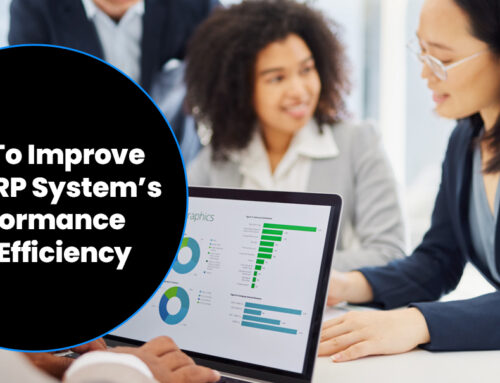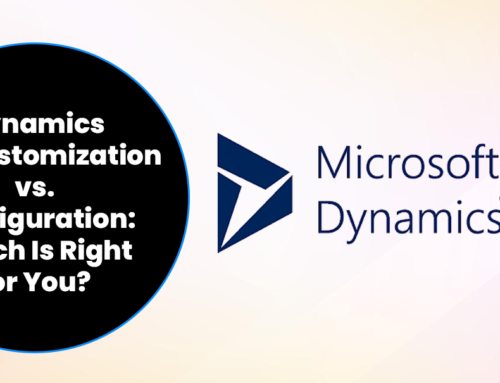
Imagining a modern enterprise without enterprise resource planning (ERP) software is tricky. A smooth ERP implementation journey, however, is even more challenging. ERP implementation improves business processes in 95% of businesses, but deployment can take months to years. Shortening this timeline is crucial to reducing time to value and avoiding budget overruns.
Cox-Little & Company has been an expert in hard-to-find ERP talent since 1985. Our certified ERP professionals have successfully led implementation projects across various industries. Recently, we curated a comprehensive playbook outlining the different phases of ERP implementation.
In this part one of our blog series, we aim to reveal the first 14 steps from 28 provisions for successful, cost-effective, and timely ERP implementation:
Step 1: ERP Project Planning with Leaders & Stakeholders:
Engage leaders and decision-makers to develop clear business goals for the ERP platform. ERP professionals work with key stakeholders to understand expectations, requirements, budgets, and resource availability for a cloud or on-premises solution.
Step 2: Building a Business Use Case, Cost, & ROI Assessments:
Define the long-term ERP vision and set key performance indicators (KPIs) to measure the impact on business value and operations. Establish metrics for evaluating ERP project success.
Step 3: Defining ERP Project Scope:
Discuss the ERP project’s unique technical and operational requirements, outlining critical necessities such as migrations, integrations, and relevant modules.
This phase brings together ERP project teams, consultants, IT executives, decision-makers, and support teams. Together, they outline critical necessities, like migrating legacy to cloud-native ERP platforms and selecting integration points between departments and business systems across finance, accounting, human resources, production planning, sales, inventory management, and more. ERP professionals also help select relevant ERP modules and other add-on vendor services and plan the testing, cost analysis, and change management strategies.
Step 4: ERP Vendor Selection:
Set vendor selection criteria based on functional, technical, financial, and operational requirements. Evaluate vendors on licensing costs, implementation expenses, product viability, and scalability.
Step 5: Building Change Management Strategies:
Develop comprehensive change management plans to ensure smooth ERP adoption. Engage change management experts to mitigate risks and control implementation costs and timelines. Change management planning also helps measure the overall readiness of an enterprise to navigate ERP implementation challenges through tests, surveys, and insights of stakeholders, C-suite, end-users, and others.
Step 6: Business Process Mapping:
Map current business processes to identify gaps and inefficiencies. Document these processes to prevent errors during ERP selection and implementation. ERP business process mapping also helps identify stakeholders involved in ERP configurations, customization, training, and support, planning data migration activities, testing, validation, security performance, and more.
Step 7: Business Process Reengineering:
Review business processes to determine necessary improvements and complete overhauls. This helps break down functional silos and provides a comprehensive process understanding.
Step 8: Determining ERP Deployment Options:
Based on cost, scalability, and integration needs, choose between private or public cloud, on-premises, hybrid, or SaaS deployment options.
If the enterprise has more than 1,000 employees, it needs experts to execute the deployment of Tier I ERP software across its subsidiaries and offshore locations, which can be complex and involve a lot of risk.
Step 9: Developing an IT Strategy:
IT and tech strategy in the context of ERP implementation requires evaluating cost, customization, scalability, and support needs. This phase includes critical planning to build:
- Relevant Integration Strategy: Choose between ERP systems that are compatible with the rest of the enterprise systems or select several integrated best-of-breed platforms.
- Planning Customizations: Determine how much customization and flexibility is required to meet business processes
- Evaluating Strategic Goals: Examine the current environment and infrastructure to determine how the new ERP application will integrate.
Step 10: Developing Data Migration Strategies:
Typically, this happens before ERP software selection. Data migration planning considers all aspects of data and their sources for mapping them into the new ERP system or migrating them from legacy software to the new cloud-based platform while maintaining quality, accuracy, and consistency.
Step 11: Communicating with Executives:
Ensure executives and project managers understand the business case for ERP implementation. Their insights help set realistic expectations for cost, resources, milestones, and go-live dates.
Step 12: Managing ERP Staffing Needs:
Assess whether internal teams can manage ERP processes, testing, administration, analysis, and training. If necessary, hire ERP advisors or consultants to support the project. Ensure the right resources are available to manage the project post-go-live.
Step 13: Developing Project Governance Plan:
Set a regular project cadence with a governance plan and documentation to track the roadmap, customizations, integrations, and project vision.
Step 14: Validating ERP requirements & Demo Scheduling:
Share the checklist of requirements, data migration plans, IT strategy, and integration workflows with leaders. Arrange meetings with potential ERP vendors to review their offerings and create scorecards to select the best option.
Let’s visit some FAQs to understand the phases of ERP implementation
1. What is ERP Implementation?
A study by Oracle NetSuite finds that nearly 64% of companies worldwide plan to implement ERP by 2025. IT leaders and executives consider ERP systems implementation a top priority for their enterprise. ERP implementation entails installing an ERP system to enhance efficiencies across processes, workflows, and business functions by providing stakeholders and departments with real-time data access and reporting. ERP platforms help break data silos across systems and functions by gathering data and integrating core business functions such as finance, accounting, human resources, CRM, supply chain, logistics, distribution, and more.
2. What is the average ERP implementation timeline?
The implementation timeline depends on the organization’s size, project scope, current IT infrastructure and system architectures, data migration and audit requirements, and more. Typically, small enterprises require at least a quarter, medium-sized businesses need six months, and large enterprises take more than a year.
3. Does the deployment time vary for cloud-based and on-prem ERP systems?
Cloud-based ERP implementations are shorter than on-premises ERP deployments as they do not require any hardware installation and configurations. They last about three months compared to a year with on-prem systems and are easy to implement across enterprise divisions, subsidiaries, and geographical locations.
If you want to hire ERP professionals for successful ERP implementation, contact us today!





